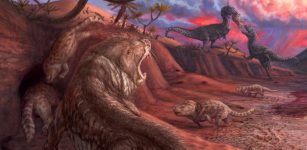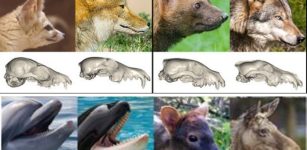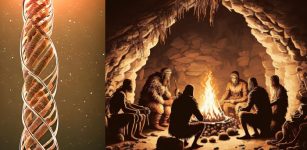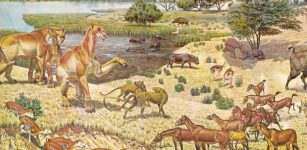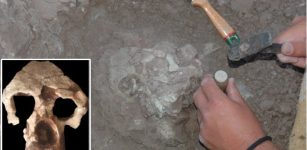Mammals Lived On The Ground Several Million Years Before The Dinosaurs’ Mass Extinction
Jan Bartek - AncientPages.com - Recent research led by the University of Bristol has uncovered that many mammals were already adapting to a terrestrial lifestyle several million years before the mass extinction event that eliminated the dinosaurs. This new study offers compelling evidence of this shift, highlighting how mammals were increasingly living on the ground before the asteroid's impact.
Dryolestes, a Late Jurassic relative of the Cretaceous therians. Image credit: Artist James Brown, courtesy of Pamela Gill
The research team analyzed small fossilized bone fragments, mainly focusing on limb bones from marsupial and placental mammals found in Western North America. This region is unique for its well-preserved terrestrial fossil record from that era. By examining these limb bones, which contain indicators of locomotion habits comparable to those of modern mammals, researchers identified adaptations for ground-based living.
Professor Christine Janis, lead author and a member of the University of Bristol's School of Earth Sciences, noted that it was previously understood how plant life evolved towards the end of the Cretaceous period. The emergence of flowering plants, or angiosperms, contributed to creating more diverse ground-level habitats.
"We also knew that tree-dwelling mammals struggled after the asteroid impact. What had not been documented was whether mammals were becoming more terrestrial, in line with the habitat changes," Professor Janis said.
Previous studies have traditionally relied on complete skeletons to examine the movement of ancient mammals. However, this research marks one of the pioneering efforts to utilize small bone elements for tracking changes across entire communities. The research team employed statistical data gathered from museum collections located in New York, California, and Calgary to conduct an analysis of these minute fossils.
"The vegetational habitat was more important for the course of Cretaceous mammalian evolution than any influence from dinosaurs," Professor Janis added.
The evidence was collected from bone articular fragments of therian mammals, a group that encompasses both marsupials and placentals. Due to the distinct nature of their bones, the research team's methods were not extended to more primitive mammals like multituberculates, which were prevalent during that period.
Professor Janis said, "We've known for a long time that mammalian long bone articular surfaces can carry good information about their mode of locomotion, but I think this is the first study to use such small bone elements to study change within a community, rather than just individual species."
This research endsthe project, yet the findings provide valuable insights into how prehistoric mammals adapted to shifting environments several million years prior to the asteroid impact that significantly altered life on Earth. These insights enhance our understanding of evolutionary responses in ancient ecosystems.
The study was published in the journal Palaeontology
Written by Jan Bartek - AncientPages.com Staff Writer






